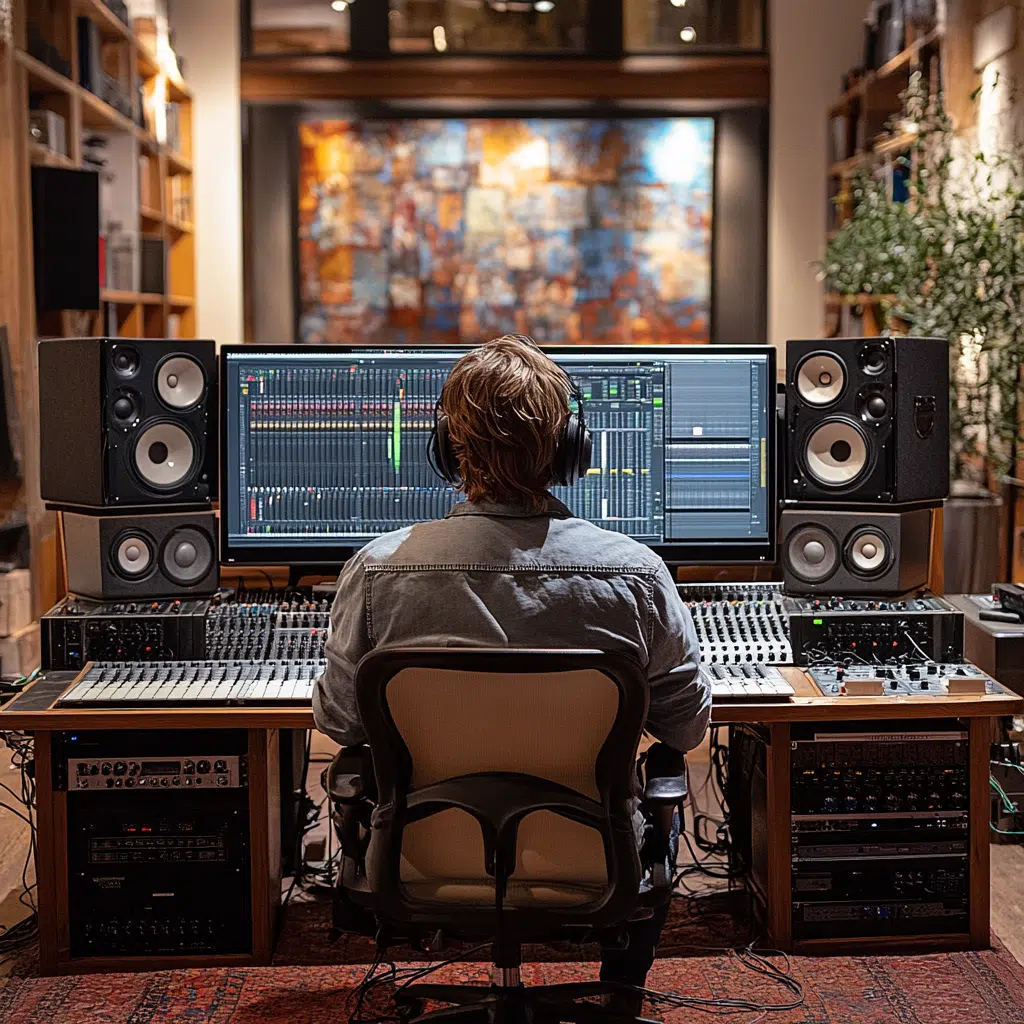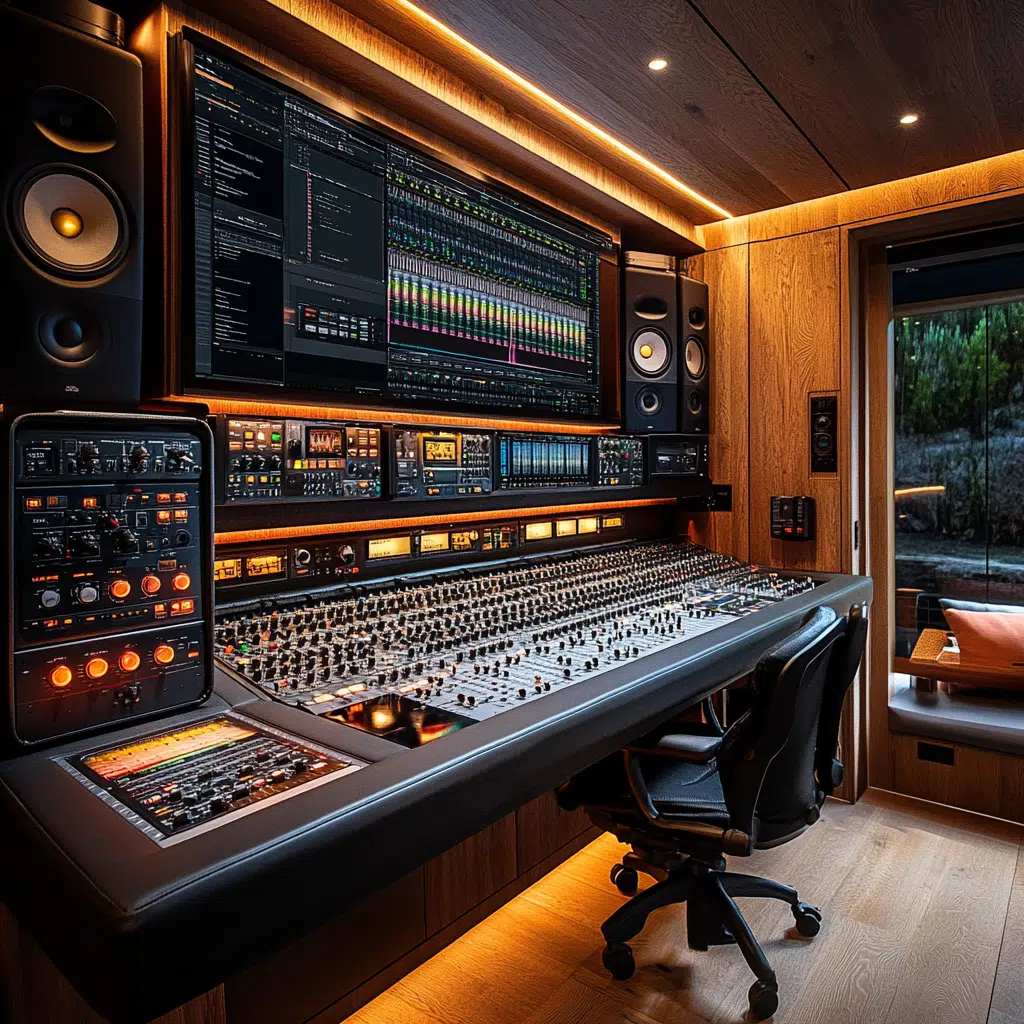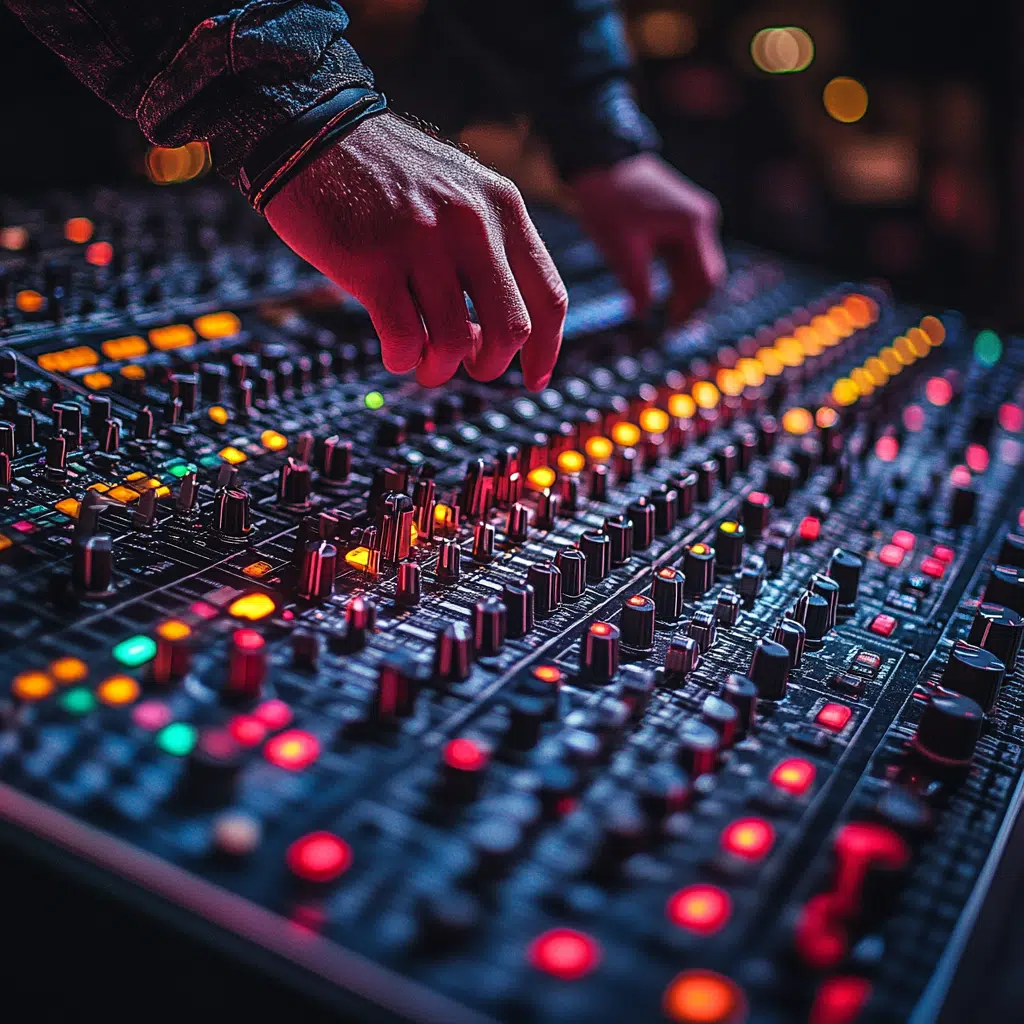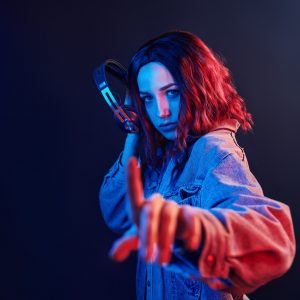In the fast-paced world of filmmaking, Remote Film Sound Mixing has become a game changer. With advances in technology, mixing sound has never been more flexible and accommodating. Filmmakers, producers, and content creators are keenly aware that high-quality audio elevates a project from average to award-winning. By tapping into expert sound design techniques, Dolby Atmos mixing, and efficient remote collaboration, filmmakers can transform their audio experience and craft narratives that resonate deeply with audiences.
The Top 7 Remote Film Sound Mixing Techniques for Award-Winning Audio
Pro Tools remains the gold standard for audio post-production. Its cloud collaboration features allow remote teams to access session files, communicate in real time, and track changes without geographic constraints. Award-winning sound designer Skywalker Sound has effectively harnessed Pro Tools for collaborating on blockbuster films, showcasing how this software drives success in remote workflows.
The introduction of Dolby Atmos has fundamentally transformed how filmmakers experience sound mixing. It allows sound designers to position audio in a three-dimensional environment, leading to deeper viewer engagement. Renowned filmmakers like Christopher Nolan have integrated Atmos into their projects, resulting in auditory masterpieces. Remote teams can utilize software like Adobe Audition combined with Dolby’s production suite to maintain exceptional sound quality, no matter their location.
Source Connect is a must-have tool for anyone serious about remote film sound mixing. This low-latency audio streaming solution enables engineers to mix as though they’re in the same room. Its value was particularly clear during the pandemic when studios like Marvel Studios relied on Source Connect to continue their post-production work. This capability allows sound mixers to integrate voiceovers seamlessly, contributing significantly to the final sound design.
Platforms such as Frame.io and Dropbox are essential for modern film teams, offering cloud storage that allows quick access to files from anywhere. These tools enable projects to keep their sound files, notes, and feedback all in one place. Take the film Nomadland, which showcased the effectiveness of cloud storage, enabling small crews to manage complex audio files in a competitive landscape.
Tools like Zoom and Slack have rapidly become indispensable for facilitating remote discussions on sound design. They allow mixing engineers to connect directly with directors for real-time feedback and immediate iterations. Filmmakers such as David Fincher have integrated these tools into their remote projects to maintain creativity and clarity throughout the sound design process.
High-quality plugins from companies like Waves and iZotope enrich the sound quality and introduce innovative effects without the need for bulky physical equipment. These companies offer demo versions for testing in various remote settings, allowing engineers to flexibly achieve their sound goals. For instance, celebrated sound mixer Emma Thomas applied specialized Waves plugins for “The Dark Knight,” illustrating how superior results can be accomplished remotely.
When diving into remote projects, setting clear guidelines is crucial. Establishing norms around work hours, file management, and feedback processes can greatly enhance workflows. The remote team responsible for the sound design of The Mandalorian excelled in their collaboration ethics, showcasing how setting such standards could elevate creative processes and foster fruitful professional relationships.
Navigating Challenges in Remote Film Sound Mixing
Despite the countless benefits of Remote Film Sound Mixing, certain challenges will likely arise. For instance, technical difficulties such as poor internet connectivity can slow down production and frustrate teams. Investing in quality broadband services becomes non-negotiable for serious mixing professionals. Additionally, dealing with varying time zones can complicate communication; hence, using recorded discussions and asynchronous feedback tools can bridge these gaps.
The Future of Remote Film Sound Mixing
Looking ahead, the evolution of remote film sound mixing shows no signs of slowing down. Emerging technologies like augmented reality audio mixing may allow designers to visualize and refine their mixes in three-dimensional space. We’ll also likely see advancements in AI-driven sound design to speed up workflows without compromising creative authenticity. By fully embracing these techniques, filmmakers can achieve remarkable audio quality that not only meets industry standards but sets new ones.
By implementing the strategies discussed here, filmmakers have a world of possibilities to create compelling sound designs. The shift to Remote Film Sound Mixing isn’t just a temporary solution—it’s the future direction of the film industry. High-quality audio enhances narratives and deepens audience engagement, ensuring projects resonate long after the credits roll. Whether through seasoned professionals like Jeffery Alan Jones at Alan Audio Works, or innovative tools and techniques, the potential to craft award-winning soundscapes is greater than ever.
In conclusion, as filmmakers harness the power of remote collaboration and advanced technologies, the opportunities for creating breathtaking auditory experiences are limitless. Just like the inspiring works of Hans Zimmer and Skywalker Sound, the future of sound mixing holds the promise of creating a new cinematic language where sound plays a pivotal role in storytelling.
For those exploring Remote Film Sound Mixing, remember the value of collaboration and the cutting-edge tools at your disposal. The journey toward award-winning sound is no longer confined by physical distance; it’s a collective vision brought to life digitally, allowing storytellers to shine, no matter where they are in the world.
By leveraging these insights, filmmakers and content creators can set themselves on a path to not just meet but exceed the expectations of a discerning audience. So dive in, experiment, and let your audio tell stories that leave a lasting impact.
Remote Film Sound Mixing Secrets for Award-Winning Sound
The Rise of Remote Film Sound Mixing
In today’s fast-paced film industry, remote film sound mixing is becoming more popular than ever. With advances in technology, sound designers can collaborate from miles away, making it easier for filmmakers to tap into talented professionals across the globe. An interesting twist in this scenario is how it opens doors for those working in the multimedia field. A great resource to check out is Remote Sound mixing For Multimedia—a( handy guide that underscores the vast scope of possibilities.
While diving into remote film sound mixing, one can’t help but notice the importance of delivering immersive audio experiences. Whether it’s creating a heart-pounding chase scene or a subtle backdrop for dialogue, sound is pivotal. This is where Surround Sound Mixing Remotely comes into play, showcasing how sound designers can replicate theater-like experiences right from their home studios.
Fun Facts About Remote Mixing
Did you know that remote film sound mixing can save substantial time and costs for filmmakers? With its flexibility, talent can work seamlessly across different schedules. In fact, more creators are opting for remote Voiceover And Adr mixing to enhance their projects, which you can explore further in Remote Voiceover and ADR Mixing. This innovation also allows for quicker turnaround times—crucial in a competitive market.
Curiously, as this trend continues to grow, it has united sound professionals with filmmakers who might have initially been on different coasts. This connection can lead to collaborations that might not have happened otherwise! Picture this: a sound mixer based near 48 Porter Road in Andover MA teaming up with a videographer in Los Angeles for that perfect audio clip. How cool is that? Plus, the ongoing demand for skilled professionals means they’re continuously sharpening their tools, giving them a serious competitive edge in this evolving market.
The Future of Film Sound Mixing
As remote film sound mixing continues to flourish, it’s fascinating to think about where it’s headed. The increased use of cloud technology may open new avenues for collaboration, pushing the envelope even further. Keeping an eye on innovations in the field helps tell us how the trade is transforming. For instance, as things pick up, it might be worth checking on the latest industry trends like what is the current rate of interest for investment in equipment or studios, which can be helpful to filmmakers investing in quality sound.
Lastly, consider the emerging voices in sound design. With virtual platforms, even newcomers find their spots in the industry. Who knows, the next big sound designer may be one of the Bijou Phillips TV Shows fans diving into gear from their living rooms! All in all, remote film sound mixing isn’t just a trend; it’s completely reshaping how films sound, making award-winning audio accessible to anyone willing to put in the effort.
What is remote mixing?
Remote mixing means that the audio mixer does their job from a different location, not being there with the rest of the creative team physically. It’s become super common, especially with advancements in technology.
How much does it cost to sound mix a film?
The cost of sound mixing a film can really vary, usually sitting somewhere between $10,000 and $100,000 or more. It all depends on how big and complex the project is, so the price can go way up for larger productions.
What is sound mixing in film making?
Sound mixing in filmmaking is all about blending all the audio elements together to create a balanced and polished final track. This includes dialogue, sound effects, and music, ensuring everything sounds crystal clear and cohesive.
How do you mix home recordings?
To mix home recordings, start with cleaning up your audio tracks, balancing levels, and adding some EQ and compression to make everything sound full and smooth. It’s about getting the best sound out of what you’ve recorded at home.
What are the three types of audio mixers?
Three types of audio mixers are analog mixers, digital mixers, and software mixers. Each one has its own way of processing and controlling the audio, catering to different needs and preferences.
What does remote audio mean?
Remote audio refers to sound recordings or mixing that take place away from the traditional studio setup. It allows creatives to work together without being in the same place, making it super convenient.
How long does it take to sound mix a feature film?
Mixing a feature film can take quite a bit of time, often several weeks, depending on the project’s complexity. Every layer of sound gets careful attention to achieve the best final product.
What level of sound mixing for film?
Sound mixing for film typically needs to be at a professional level. It’s got to be crisp and clear, fitting the film’s emotional tone and enhancing the viewing experience.
How much do movie sound mixers make?
Movie sound mixers make various amounts depending on their experience and the project’s budget, but they can earn anywhere from a few thousand dollars per project to six figures for big films.
What’s the difference between sound mixing and sound editing?
Sound mixing and sound editing are different steps in the audio process; sound mixing is about combining audio tracks into a final product, while sound editing focuses on selecting and arranging individual sound elements.
What are the three types of sound in film?
The three types of sound in film include dialogue, sound effects, and music. These components work together to create a rich audio experience that supports the visuals.
How do you become a film sound mixer?
To become a film sound mixer, you’ll typically want to study audio production, gain hands-on experience, and work your way up through internships or assistant roles in the industry.
Do I need a mixing board for home recording?
You don’t necessarily need a mixing board for home recording; you can do a lot with software and a good audio interface. A mixing board is nice, but it’s not a must-have for beginners.
What to start with when mixing?
When mixing, start with balancing your levels and panning the audio to ensure everything sits well in the mix. Getting the foundation right is key before adding any effects.
How do I make my mixes sound more professional?
To make your mixes sound more professional, focus on EQing properly, using compression wisely, and paying attention to stereo imaging. Critical listening skills are essential too—trust your ears!
What does remote mean in music?
Remote in music refers to creating or mixing music without being in the same physical space as the other collaborators. This allows artists to work from anywhere—super handy these days!
What is the difference between DJ and live mixing?
The difference between DJ and live mixing is mainly in the context; DJs mix pre-recorded tracks to create a continuous flow of music for parties, while live mixing involves performing with musicians or handling live sound for events.
What’s the difference between recording and mixing?
Recording is the process of capturing sound, while mixing is about taking those recorded sounds and blending them into a final audio piece. They’re both vital, but they do very different jobs.
What is automation mixing?
Automation mixing is the technique of using software to automate changes in audio levels, effects, or other parameters during playback. It helps create dynamic mixes without constantly tweaking controls by hand.



